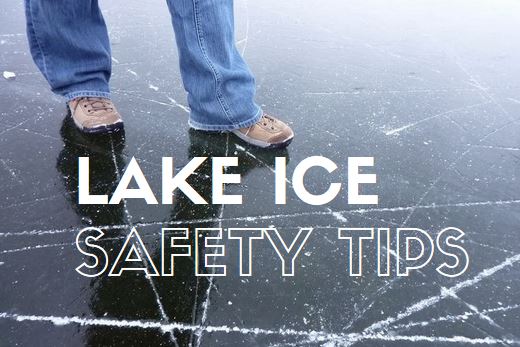
Stay safe this winter on your lakefront property. Follow these great tips:
- Never go onto the ice alone. A friend may be able to rescue you or go for help if you fall through the ice.
- Always keep your pets on a leash. If a pet falls through the ice do not attempt to rescue your pet, go for help.
- New ice is usually stronger than old ice. As it ages, the bond between the crystals decays, making it weaker, even if melting has not occurred.

- Beware of ice covered with snow. Snow can insulate ice and keep it strong, but can also insulate it to keep it from freezing. Snow can also hide cracks, weak and open ice.
- Slush is a danger sign, indicating that ice is no longer freezing from the bottom and can be weak or deteriorating.
- Ice formed over flowing water (rivers or lakes containing a large number of springs) is generally 15% weaker.
- Ice seldom freezes or thaws at a uniform rate. It can be one foot thick in one spot and be only one inch thick 10 feet away.
- Reach-Throw-Go. If a companion falls through the ice and you are unable to reach that person from shore, throw them something (rope, jumper cables, tree branch, etc.). If this does not work, go for help before you also become a victim. Get medical assistance for the victim immediately.
- If you fall in, try not to panic. Turn toward the direction you came from. Place your hands and arms on the unbroken surface, working forward by kicking your feet. Once out, remain lying on the ice (do not stand) and roll away from the hole. Crawl back to your tracks, keeping your weight distributed until your return to solid ice.
By following safety procedures, you can be safe and enjoy the many winter activities offered by living the lakefront lifestyle!
Posted by Scott Freerksen “The Lake Guy”
